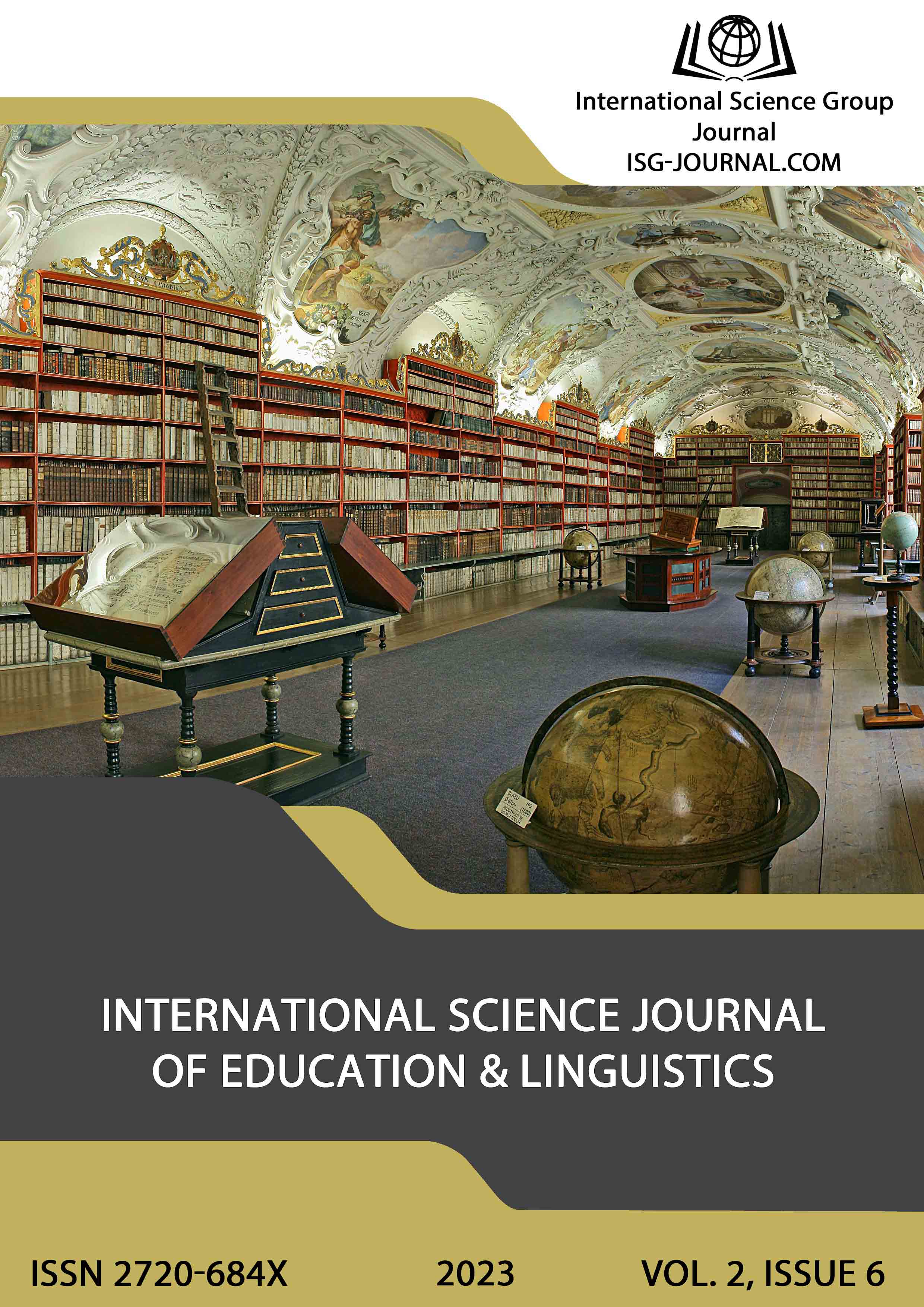The role of the cognitive-communicative approach in the study of foreign languages by students
DOI:
https://doi.org/10.46299/j.isjel.20230206.05Keywords:
cognitive-communicative approach, communicative approach, linguistic skills, foreign languageAbstract
Modern life requires knowledge of a foreign language from each of us, especially young people. The need for its study increased after the full-scale invasion of the Russian Federation into Ukraine on February 24, 2022. The article examines the peculiarities of foreign language learning (English, French, Spanish, German, etc.) by Ukrainian students. Scientific intelligence analyzes a significant volume of scientific works devoted to the characteristics of approaches related to the specified problem. For the most effective study, the author suggests using a cognitive-communicative approach. Svitlana Romanchuk presents convincing arguments regarding the use of a cognitive-communicative approach when students/listeners study different language levels. Cognitive and communicative methods are aimed at fulfilling the main task of language education under modern conditions - the formation of communicative competence of a language learner, and fully corresponds to the European guidelines on language education. Each of these methods has its own tasks, but, being integrated, they perform the main function - the formation and further development of a linguistic personality on the basis of continuous language education. The results of the proposed study also discuss the role of the cognitive-communicative approach to foreign language learning by Ukrainian students. The author came to the conclusion that the use of the cognitive-communicative approach contributes to the faster and easier acquisition of a foreign language by students. Svitlana Romanchuk also offered some methodological "strokes" (exercises) that present the approach discussed in the article and are effective when learning a foreign language.References
Барабанова, Г.В. (2005). Методика навчання професійно-орієнтованого читання в немовному ВНЗ: Монографія. Київ: Фірма «Інкос», 315.
Ігнатова, О. І. (2002). До питання вибору змісту та методів навчання іноземній мові (з досвіду викладання в Дипломатичній академії України при МЗС України). Науковий вісник Дипломатичної академії України. Вип. 6. 190-198. Відновлено з: http://nbuv.gov.ua/UJRN/Nvdau_2002_6_24
Зубенко, Т.В. (2008). Комунікативний підхід до навчання іноземної мови. Науковий вісник Миколаївського державного університету: Збірник наукових праць. Випуск 23: Педагогічні науки. Том 1 / За заг. ред. В.Д. Будака, О.М. Пєхоти. Миколаїв. МДУ. 146.
Клименко, М.В. (2017). Когнітивно-комунікативний підхід до навчання спілкування англійською мовою. Англійська мова та література. № 7–8. 63.
Стойко, С.В. (2011). Реалізація комунікативного підходу в навчанні іноземних мов. Вісник Чернігівського національного педагогічного університету. Чернігів : ЧДПУ. Вип. 85 (Серія: Педагогічні науки). 223. Бацевич, Ф. С. (2004). Основи комунікативної лінгвістики. Київ: Видавничий центр «Академія», 344.
Романчук, С.М. (2022). Деякі зауваги щодо дослідження когнітивістики у лінгвістичних студіях. Вчені записки Таврійського національного університету імені В. І. Вернадського. Серія: Філологія. Журналістика. Том 33 (72) № 6. Частина 2. С.1-7. Відновлено з: http://philol.vernadskyjournals.in.ua/journals/2022/6_2022/part_2/1.pdf
Бацевич, Ф. С. (2004). Основи комунікативної лінгвістики. Київ: Видавничий центр «Академія», 344.
Barbot, M.-J., Camatarri, G. (1999), Autonomie et apprentissage. Innovation dans la formation, PUF. 244.
CNDP (2018). L’enseignement du français aux enfants d’origine étrangère.194.
Chastain, P.-K. (1990). «La théorie cognitive de l’apprentissage et son influence sur l’apprentissage et l’enseignement des langues secondes» dans ELA n°77, janvier-mars 1990, Didier-Erudition, Paris. 21-28.
Castellotti, V., De Carlos, M. (1995). La formation des enseignants de langue, CLE International, Paris. 192.
Moore, D. (1993). « Entre langues étrangères et langue d’origine : transformer la diversité en atout d’apprentissage» dans ELA, n°89, Didier-Erudition, Paris, 97-106.
Gaonac’h, D. (1991). Théorie d’apprentissage et acquisition d’une langue étrangère, Hatier-Didier, Paris. 239.
Bourret, P. (1999) “ Pour un enseignement stratégique ” dans LE FDM n°307, novembre- décembre 1999, Hachette-Edicef, Paris.27-30.
Huong, Dao Anh (2010). L’approche cognitive dans l’apprentissage des langues étrangères, sa conception et ses apports à l’acquisition des compétences linguistiques. Synergies Pays riverains du Mékong n°2. 127-139 /https://gerflint.fr/Base/Mekong2/dao_anh_huong.pdf
Vigner, G. (2001). Enseigner le français comme langue seconde, CLE international, Paris, 127.
Hagege, C. (1996). L’enfant aux deux langues, Editions Odile Jacob, 298.
Anderson, R.C. (2006). Readings in the psychology of cognition.1965. Original from the University of Michigan Digitized Jun 13. 690.
Пустовіт, Г.П. (2010). Концептуальні засади модернізації змісту сучасної позашкільної освіти і виховання учнів. Рідна мова. № 10. С.21-22
Вовк, О.І. (2013). Комунікативно-когнітивна компетентність майбутніх філологів: нова парадигма сучасної освіти. Черкаси: Видавець Чабаненко Ю.А. 500.
Годованець, Н.І., Леган, В.П. (2016). Когнітивно-комунікативний підхід при навчанні іноземної мови. Науковий вісник Ужгородського університету. Серія: «Педагогіка. Соціальна робота. 2016. Випуск 1 (38). С. 94-96.
Pendanx, M. (1998). Les activités d’apprentissage en classe de langue, Collection dirigée par S. Moirand, Hachette FLE, 192.
Downloads
Published
How to Cite
Issue
Section
License
Copyright (c) 2023 Svitlana Romanchuk

This work is licensed under a Creative Commons Attribution 4.0 International License.





